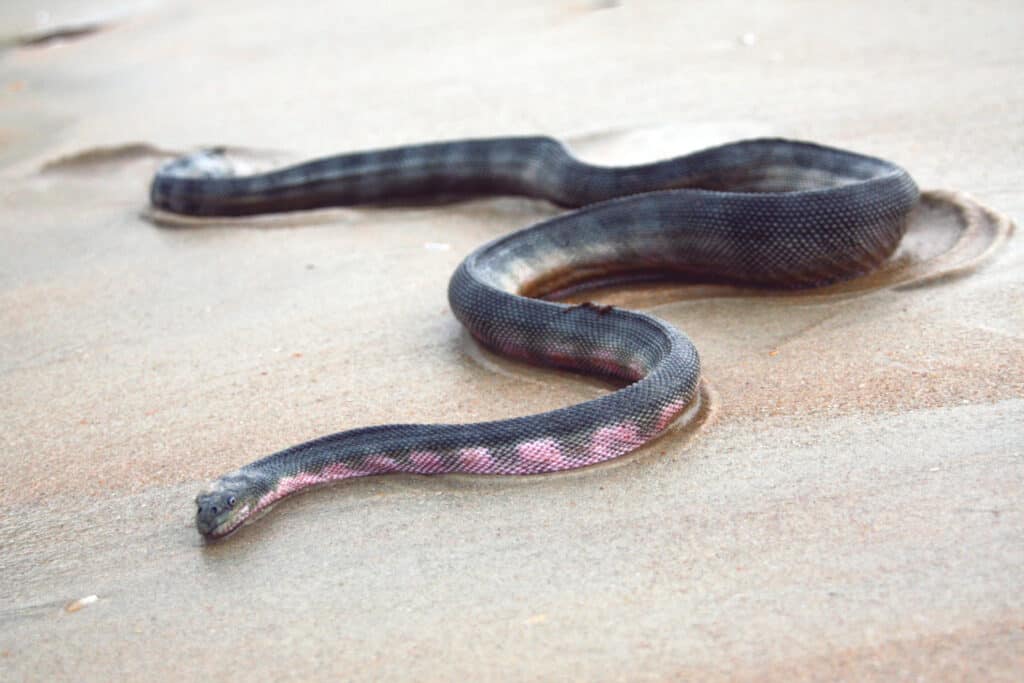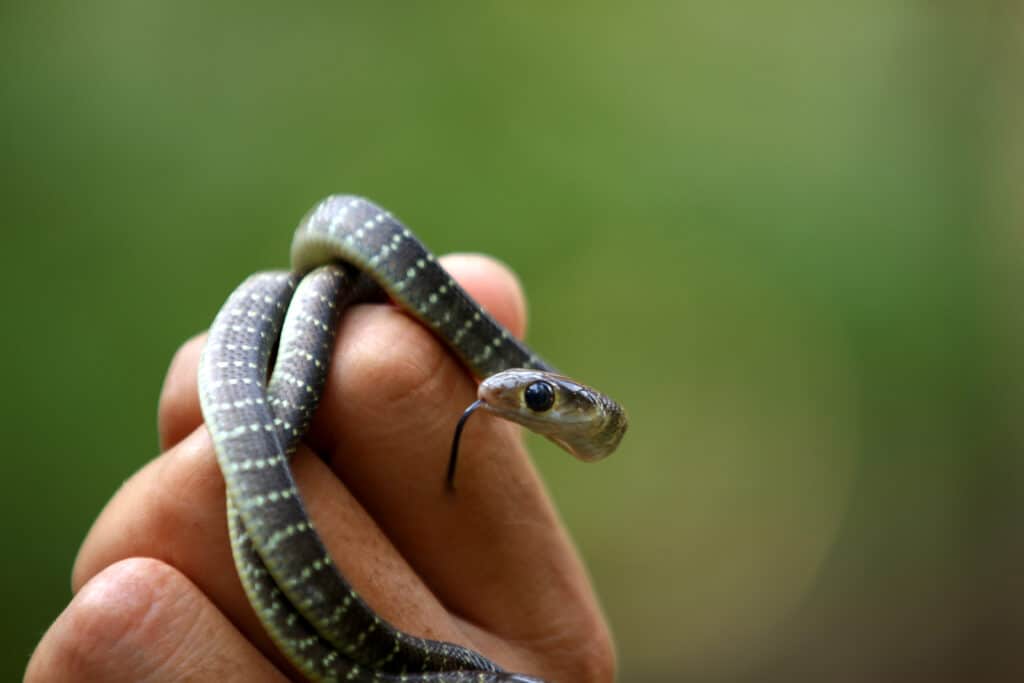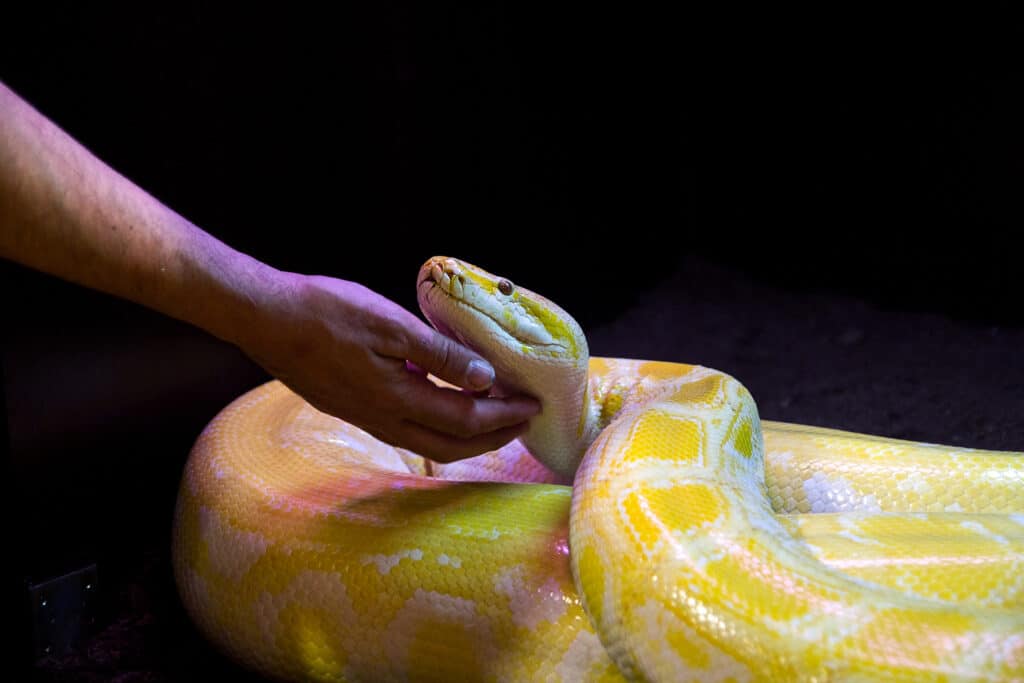Aside from cat lovers, puppy enthusiasts, and furry rodent fans, there is another category of pet owners – reptile lovers! Taking care of pet reptiles like lizards, iguanas, and geckos can be a unique experience, with snakes being a popular choice for most reptile lovers.
But are snakes good pets? In this guide, you’ll learn about what makes snakes great pets and some of the challenges you face taking care of one.
What Makes Snakes Good Pets?
Are snakes good pets? Their portrayal in horror stories and biblical representations hasn’t helped their reputation. Hence, snakes are often misunderstood, even though, like most pets, they offer their owners stress relief and companionship. Below are some advantages of owning a pet snake:
Snakes aren’t High Maintenance
Your responsibilities as a snake owner mainly include feeding, tank cleaning, and the occasional trip out of the terrarium. Apart from those, snakes do not require as much attention compared to other pets like dogs.
They do not need to go on walks or require any form of exercise.
Drama-Free
Most snakes are docile and do not create any mess in your home. Snakes shed their Skin, unlike furry pets like cats and dogs that constantly shed hairs around your home. This makes them a go-to option for people who would love to keep pets but are allergic to the dander and pet hair that furry animals leave around
With snakes, you won’t have to constantly dust and vacuum your carpets or deal with tantrums and scratches on your living room suite. Snakes do not require home training and being cold-blooded; they are comfortable chilling in their tanks all day.
Mesmeric Movement
Nothing beats coming home after a busy day to relax with your snake as you watch it explore the aesthetically pleasing enclosure you’ve created for it. Their mesmerizing and graceful movement can be therapeutic and give you a sense of serenity.

Snakes can move in very graceful and entrancing ways.
©Raimonds Romans raymoonds/Shutterstock.com
Snakes are Quiet
Snakes make various sounds, from hissing to growling but are generally quiet. The sounds they make are nothing compared to the barking, meowing, and annoying sounds of knocking things around we’ve come to expect from pets like dogs and cats.
This means happy neighbors, no barking at strangers, and no waking up in the middle of the night because your dog got spooked by its shadow.
Snakes are less expensive than other Pets.
Some snakes are exotic with really cool morphs with price ranges running into thousands of dollars. But on average regular snakes cost less than $75.
Setting up the enclosure is also part of the initial cost, including lighting, heat source, substrate, snake hideaway boxes, and essentials like hydrometer and thermometer. Then there’s the cost of feeding, which is about $20-40 per month. Most snakes only eat a couple of times per week, and some, like Ball Pythons, can go more than a month without eating.
Things to Consider Before Settling For a Snake Pet.
- Snakes have an average life expectancy of 30 years, so be sure you’re ready for a long term commitment before getting a snake pet
- You must be sure you can stomach feeding prey animals to your snake. However, there’s a safer option of feeding thawed, pre-killed prey to your snake.
- Snakes can find and squeeze through the small orifices. Hence, the need to make the enclosure secure and escape-proof.
- Unless you’re a professional herpetologist, it’s advisable to avoid choosing venomous and large constricting snakes as pets. Yes, they are often beautiful but resist the temptation.
- Snakes caught in the wild tend to be more challenging to tame, prone to diseases and parasites, and more stressed. Hence it’s better to settle for a captive-bred snake from a reliable breeder.
Do Pet Snakes Recognize Their Owners?
Snakes are not intelligent enough to recognize your individuality, but they possess a great sense of smell that could help them remember their owner’s scent.
If you prefer not to use a snake hook when handling your snake, you should always wash your hands before making contact with them. Because snakes track their prey using their powerful sense of smell and heat-sensing abilities, warm-blooded humans can easily be mistaken as food if deemed unfamiliar.
Are Snakes Capable of Showing Affection?
Snakes aren’t one of those pets that will dote on your every move. They possess a small frontal lobe which means they are intellectually incapable of showing or understanding emotions.
Snakes are driven mainly by instinctive affection, which translates to feeding, breeding, and survival. The most affection they can show you as their owner is acceptance. Acceptance means they wouldn’t get defensive or agitated when you approach their enclosure or handle them.

Snakes aren’t really capable of complex emotions like affection. The most they will feel toward their owner is acceptance.
©Mufti Adi Utomo/Shutterstock.com
Do Snakes Like Being Pet
Although some snakes are not bothered by human interaction because they’ve grown accustomed to being handled, they typically don’t like being pet. It’s not like snakes don’t feel anything when they’re petted; it’s just that the sensation is quite different for them, unlike with domesticated animals.
Snakes are solitary animals, and they only rub their body against other snakes for specific purposes like during mating rituals or to peel off dead skins during a shed. So, if your snake doesn’t try to bite or squirm when you pet it, it’s difficult to tell if it genuinely enjoys it or is just being accepting of you.
Some snake owners will argue that’s love!
How Should You Pet a Snake
Some snakes can tolerate gentle massage along the length of their body, belly rubs, chin scratch, and even head strokes, while others can’t.
What works for every snake is different, but ultimately, you have to be gentle and respectful of your snake’s boundaries. When your snake stops appreciating your petting endeavors, it gives signals like squirming away, hissing, attempting to strike, bite or puff up.
Head to tail direction is the correct way to stroke your snake, irrespective of where you’re petting. Going the other way makes them uncomfortable since it’s against the natural resting direction of their scales.

©Gonzalo Jara/Shutterstock.com
When Not to Pet a Snake
There are various times when it’s risky or insensitive to pet your snake. During shedding, a snake’s skin is usually very sensitive. Petting it in this condition could prematurely remove old skin and inflict damage on the snake’s new skin layer
You also don’t want to pet your snake when it’s mealtime. Putting your hands into the enclosure or trying to pet your snake when it’s about to devour its meal is not advisable. Your snake might mistake your warm-blooded hands or fingers for its prey/food.
Lastly, leave your snake alone when it’s sick, injured, or infected with parasites. Allow it to stay warm and rest.
Types of Snakes That are Easier to handle.
If you’re a complete beginner in owning a snake, you might want to go for snake species that are docile and handleable. Leave the lively species with aggressive tendencies to the experts.
Baby snakes tend to be feistier because they are more prone to predation in the wild, but they become more agreeable with age and constant handling.
Here are some species of snakes you can handle with ease:
Corn Snake
Corn snakes are aboriginal to the Eastern United States. Corn snakes are perfect for beginner snake owners because they are docile, easy to care for, and don’t grow too large. They come in a variety of colors.
Milk Snake
Milk snakes are aboriginal to North and South America. They are easy for a novice to handle because even though they tend to be shy when young, milk snakes become more docile as adults.
Ball Pythons
Ball pythons are native to Africa. Even with thicker bodies, these medium-sized snakes generally stay under five feet. Captive breeding has produced ball pythons with various pattern morphs and colors.
Boa Constrictor
Boa constrictors are usually alert and active and can tolerate handling well. With an average length and weight between 5-9 feet and 20-35 pounds, respectively, they are the biggest on this list. They are low maintenance and make for great pets if you are prepared to handle their size.
King Snake
Aptly named King Snakes because they’ll readily eat other snakes, and is also why they should be enclosed alone. King snakes are considerably small pets as they grow to be about 5-7 feet in length. They are aboriginal North American snakes and breed continually in the wild, so finding a captive-bred should be easy.
Conclusion
So, do snakes make great pets? Well, it depends on what you’re looking for in a pet. If you’re the type that loves to give and receive attention from your pets, owning a snake might not be for you.
But if you’re the type that would love a low-maintenance pet that you don’t have to take on walks or constantly apologize to neighbors on behalf of, you might be on the right path In choosing a snake pet.
Remember, to stick to docile species and start away from venomous and large constricting snakes as a beginner snake owner.
The photo featured at the top of this post is © UfaBizPhoto/Shutterstock.com
Discover the "Monster" Snake 5X Bigger than an Anaconda
Every day A-Z Animals sends out some of the most incredible facts in the world from our free newsletter. Want to discover the 10 most beautiful snakes in the world, a "snake island" where you're never more than 3 feet from danger, or a "monster" snake 5X larger than an anaconda? Then sign up right now and you'll start receiving our daily newsletter absolutely free.
Thank you for reading! Have some feedback for us? Contact the AZ Animals editorial team.






